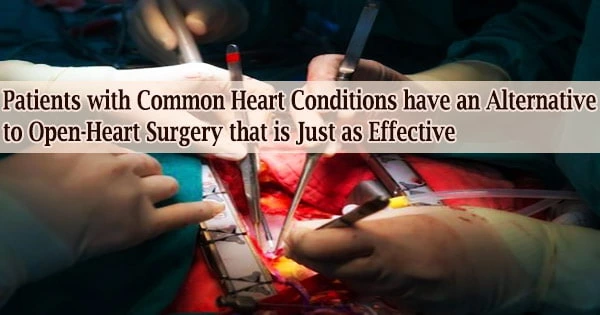A study headed by the Leicester Biomedical Research Centre of the National Institute for Health and Care Research (NIHR) found that a less invasive heart operation for a common ailment is just as successful as open-heart surgery.
The findings were published today in JAMA, the Journal of the American Medical Association (Tuesday 17th May, 2022). In treating severe symptomatic aortic stenosis, the study compared Transcatheter Aortic Valve Implantation (TAVI) to traditional surgery.
The valve through which blood flows as it leaves the heart narrows with this illness, and therapy often necessitates surgery. This illness is predicted to affect 1.5 percent of UK individuals over 55 and 3.5 percent of those over 75.
The study is the first of its kind to be publicly sponsored, with over £3 million from the NIHR Health Technology Assessment (HTA) initiative, and it included every TAVI center in the UK.
Any sort of surgery in which the chest is cut open and surgery on the heart’s muscles, valves, or arteries is performed is known as open-heart surgery. It’s also known as conventional cardiac surgery.
Many innovative heart treatments can now be performed through small incisions rather than large openings. As a result, the term “open-heart surgery” is potentially deceptive.
Professor Jan Kovac led a multidisciplinary team at Glenfield Hospital in Leicester that performed the first TAVI in the UK in 2007. A new valve is threaded through a tiny tube put into an artery in the groin, upper arm, or chest during a TAVI surgery. It is a popular alternative to open-heart surgery in the United Kingdom.
TAVI has been established in previous studies to be a safe and effective treatment for those who are ineligible for traditional surgery or have a high operative risk. This study, on the other hand, covered patients who were at a reduced risk and could undergo either treatment.
It’s great news for patients that TAVI is just as safe and effective as surgery even in patients at lower operative risk. This procedure is much less invasive than conventional approaches. People who would otherwise require open-heart surgery can have this procedure, and as it has a faster recovery time it means a shorter stay in hospital for patients.
Professor William Toff
The study discovered that one year following treatment, the TAVI and surgical groups had equal rates of death from any cause and other key clinical outcomes such as stroke.
The trial enrolled 913 people who were randomly assigned to either the TAVI technique or traditional surgery. The participants were on average 81 years old.
Patients who had TAVI were more likely to have vascular issues and need pacemakers, while those who had surgery were more likely to have a serious hemorrhage.
Patients who had TAVI had a larger improvement in symptoms, functional capacity, and quality of life after 6 weeks, and the quality of life advantage was still evident at one year.
The UK TAVI project was directed by Professor William Toff of the University of Leicester’s Department of Cardiovascular Sciences. He said:
“It’s great news for patients that TAVI is just as safe and effective as surgery even in patients at lower operative risk. This procedure is much less invasive than conventional approaches. People who would otherwise require open-heart surgery can have this procedure, and as it has a faster recovery time it means a shorter stay in hospital for patients.”
“These are extremely encouraging results after one year. However, we shall continue to monitor the participants for at least 5 years to ensure no late differences in the groups emerge and to assess the durability of the TAVI valves. We hope to publish the 5-year results by the end of next year. In the meantime, patient-specific treatment recommendations should continue to be made by a multi-disciplinary heart team.”





